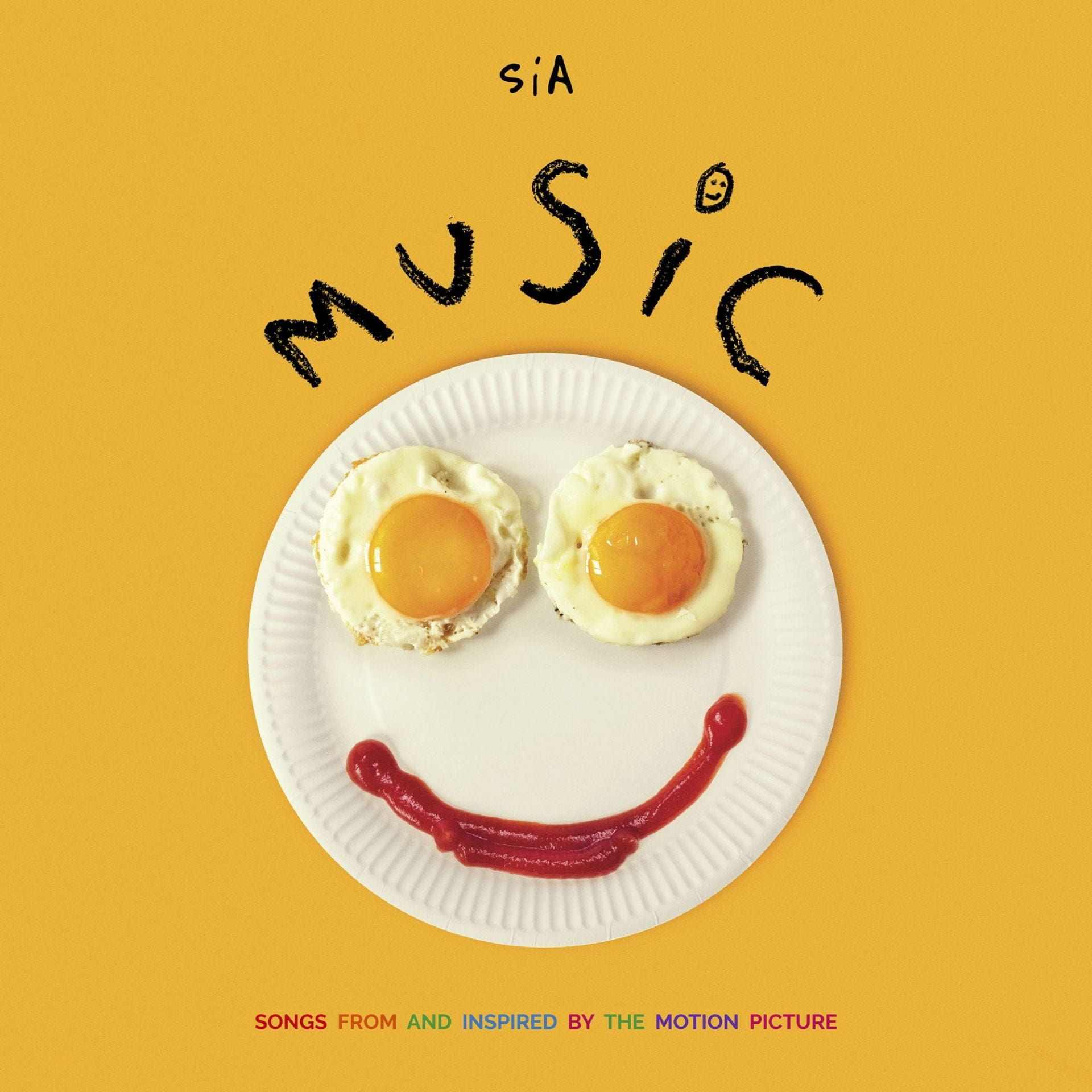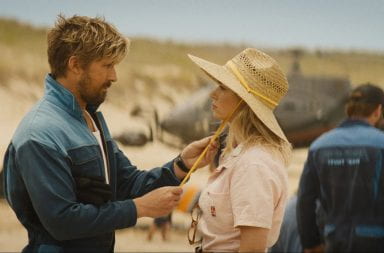
“Music,” directed, written and produced by singer-songwriter Sia that was released Feb. 10, has received backlash for its inaccurate and dangerous portrayals of autism spectrum disorder, leading both local and international advocates to criticize the film. Credit: Monkey Puzzle/Atlantic via TNS
Cartoonish caricatures of autism, sensory overstimulation and lack of proper research are just a few things that autism activists are flagging for Sia’s directorial debut, “Music.”
“Music,” directed, written and produced by singer-songwriter Sia that was released Feb. 10, has received backlash for its inaccurate and dangerous portrayals of autism spectrum disorder, leading both local and international advocates to criticize the film.
The movie follows Music (Maddie Ziegler), a young girl on the autism spectrum, and her sister Zu’s (Kate Hudson) journey to beat addiction while reconnecting with her younger sister as her sole guardian. The film switches back and forth between acting scenes and music-video-style dance scenes that feature Sia’s music and bright, colorful sets and costumes, in what is meant to represent Music’s thoughts.
Nina Skov Jensen, a 20-year-old Danish autism advocate and royal portraitist, started a Change.org petition on Feb. 9 calling for the Golden Globes to rescind the nominations for the movie that had garnered over 123,000 signatures at the time of publication.
Jensen was diagnosed with autism as a child. She said she did not originally plan on watching the movie because she knew it would be a painful experience, but she decided to watch it to increase her credibility to run a successful campaign.
“I didn’t feel anything while I watched it except strong discomfort from the strobe lights, colors, patterns and the fast camera movement. I just felt empty inside,” Jensen said. “I cried the day after when it all hit me.”
Along with the movie’s sensory overstimulation, controversy also stemmed from Sia casting Maddie Ziegler, a neurotypical girl, to play a nonspeaking autistic child with high support needs.
“The way the stims and movements are mimicked is very hurtful to watch, as it is done very mechanically and by a non-autistic individual,” Jensen said. “This is the same way we have been bullied and mocked our entire lives.”
Sia has faced backlash due to her Twitter interactions prior to the movie’s release. One user tweeted to the singer: “Several autistic actors, myself included, responded to these tweets. We all said we could have acted in it on short notice. These excuses are just that – excuses. The fact of the matter is zero effort was made to include anyone who is actually autistic. #NothingAboutUsWithoutUs.”
Sia replied, “Maybe you’re just a bad actor.”
Kayden Gill, a third-year in health sciences and president of Buckeyes for Accessibility, said not only are job opportunities for disabled actors being limited when casting a neurotypical actor, but any arguments on the film being about representation are invalidated.
“People deserve to see their stories played by themselves in media,” Gill said. “Neurotypical and able-bodied people get to turn on the TV and on any channel find a myriad of stories about people who share their experiences. What does the autistic community get?”
Additionally, the characters in the film use restraint to calm Music down. Pankhuree Vandana, medical director of the Center for Autism Spectrum Disorder at Nationwide Children’s Hospital, said there are several medical and ethical concerns when it comes to someone who is untrained restraining another individual. She said restraint is only used in serious, life-threatening situations and under a lot of training and scrutiny.
The film depicts multiple instances of prone restraint, which involves an individual’s face and frontal part of their body facing downwards during restraint. This practice was banned in Ohio in 2009, as it often reduces a person’s ability to breathe, according to the Ohio Department of Developmental Disabilities.
The use of prone restraint has ended in death in a number of cases. According to the United States Government Accountability Office, more than 20 children have died from restraint being used in schools since 2001.
After hearing the backlash, Sia went to Twitter Feb. 3 to apologize.
“I’m sorry. MUSIC in no way condones or recommends the use of restraint on autistic people. There are autistic occupational therapists that specialize in sensory processing who can be consulted to explain safe ways to provide proprioceptive, deep-pressure feedback to help [with] meltdown safety. I plan to remove the restraint scenes from all future printings. I listened to the wrong people and that is my responsibility, my research was clearly not thorough enough, not wide enough,” Sia said on Twitter.
Sia has not yet added warnings or removed the restraint scenes at the time of publication.
Sia partnered with Autism Speaks to conduct her background research for the film, according to Entertainment Weekly. However, Autism Speaks has a long history with the autism community.
In former Forbes contributor Emily Willingham’s piece “Why Autism Speaks Does Not Speak For Me,” she details the damaging language Autism Speaks uses to speak about autism spectrum disorder, such as equating the “3 million children” in the United States on the autism spectrum to a crisis of 3 million children going missing.
Although Jensen said she would be happy if Sia and Hudson withdrew their names from consideration for the Golden Globes –– the movie was nominated for Best Motion Picture – Musical or Comedy and Hudson was nominated for Best Performance by an Actress in a Motion Picture – Musical or Comedy –– if Sia truly cared about autistic people, she would put an end to the movie.
“The Golden Globes nominations are a glaring approval stamp. The entertainment industry cannot continue profiting from our disabilities while simultaneously doing nothing to help us,” Jensen said.
Jensen said people thinking they have the right to tell other people’s stories, especially if they have no connection to the communities they claim to represent, is a general problem in the entertainment industry.
Gill said representation of disability in general is important, but when it comes to autism and experiences of people on the spectrum, viewers only know what they are shown.
“There has been so little good, yet so much bad representation done, that the autistic and extending neurodiverse umbrella community constantly face some of society’s most severe forms of ableism because people only have these negative stereotypes in their mind,” Gill said.
Later on in the movie, Music is gifted an augmentative and alternative communication device, a speech-generating tablet with buttons connected to different words or pictures, to help her communicate. However, she is only able to say “I’m happy” or “I’m sad.” Jensen said because AAC devices usually have thousands of unique words programmed, this highly underestimates the intellectual capabilities of autistic people.
At the end of the film, Zu and Music crash a wedding for their neighbor Ebo’s (Leslie Odom Jr.) family. Ebo starts playing a song on the piano for Zu to sing, but she is cut off by Music singing for the first time. Jensen said this situation is completely unrealistic.
“Autistic people don’t suddenly speak or sing when it is convenient to the plot of a movie,” Jensen said. “That is not how nonspeaking works. To make it even more unrealistic, this happened at a wedding filled with people she had never met in surroundings she had never been in before.”
Vandana said the focus has always been on the individual assimilating themselves into society, but it should be shifted towards making society more inclusive.
“I think, as a society, we just need to increase our insight and tolerance for some of our neurodiverse individuals,” Vandana said. “I think just being patient and knowledgeable and insightful about how we can make their lives better, how we can integrate them into the rest of our society.”
Vandana said resources for education on autism spectrum disorder can be found on the American Academy of Pediatrics and the CDC websites. Jensen said she recommends CommunicationFIRST and their video LISTEN for people looking to learn more about nonspeaking autism.


